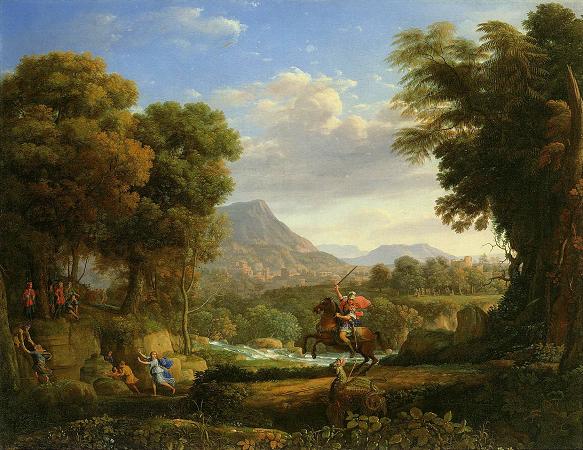Dragon. A dragon is a large, serpent-like legendary creature that appears in the folklore of many cultures around the world. Beliefs about dragons vary drastically by region, but dragons in western cultures since the High Middle Ages have often been depicted as winged, horned, four-legged, and capable of breathing fire. Dragons in eastern cultures are usually depicted as wingless, four-legged, serpentine creatures with above-average intelligence. The earliest attested dragons resemble giant snakes. Dragon-like creatures are first described in the mythologies of the ancient Near East and appear in ancient Mesopotamian art and literature. Stories about storm-gods slaying giant serpents occur throughout nearly all Indo-European and Near Eastern mythologies. The popular western image of a dragon as winged, four-legged, and capable of breathing fire is an invention of the High Middle Ages, based on a conflation of earlier dragons from different traditions. In western cultures, dragons are portrayed as monsters to be tamed or overcome, usually by saints or culture heroes, as in the popular legend of Saint George and the Dragon. They are often said to have ravenous appetites and to live in caves, where they hoard treasure. These dragons appear frequently in western fantasy literature, including The Hobbit by J. R. R. Tolkien, the Harry Potter series by J. K. Rowling, and A Song of Ice and Fire by George R. R. Martin. The word dragon has also come to be applied to the Chinese lung, which are associated with good fortune and are thought to have power over rain. Dragons and their associations with rain are the source of the Chinese customs of dragon dancing and dragon boat racing. Many East Asian deities and demigods have dragons as their personal mounts or companions. Dragons were also identified with the Emperor of China, who, during later Chinese imperial history, was the only one permitted to have dragons on his house, clothing, or personal articles. Commonalities between dragons traits are often a hybridization of avian-, feline-, and reptilian-features, and may include: snake-like features, reptilian-like scaly skin, four legs with three or four toes on each, spinal nodes running down the back, a tail, and a serrated jaw with rows of teeth. Several modern scholars believe huge extinct or migrating crocodiles bear the closest resemblance, especially when encountered in forested or swampy areas, and are most likely the template of modern dragon imagery. This also fits with the ancient words Draco and Drakon, meaning large serpent or sea serpent. The word dragon entered the English language in the early 13th century from Old French dragon, which in turn comes from Latin: draconem meaning huge serpent, dragon, from Ancient Greek, drakon serpent, giant seafish. The Greek and Latin term referred to any great serpent, not necessarily mythological. The Greek word is most likely derived from the Greek verb meaning I see, the aorist form of which is. Dragon-like creatures appear in virtually all cultures around the globe. Nonetheless, scholars dispute where the idea of a dragon originates from and a wide variety of theories have been proposed. In his book An Instinct for Dragons, anthropologist David E. Jones suggests a hypothesis that humans, just like monkeys, have inherited instinctive reactions to snakes, large cats, and birds of prey. He cites a study which found that approximately 39 people in a hundred are afraid of snakes and notes that fear of snakes is especially prominent in children, even in areas where snakes are rare. The earliest attested dragons all resemble snakes or bear snakelike attributes. Jones therefore concludes that the reason why dragons appear in nearly all cultures is because of humans' innate fear of snakes and other animals that were major predators of humans' primate ancestors.
more...













